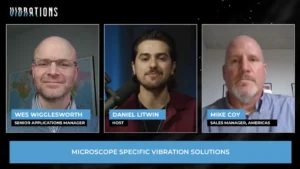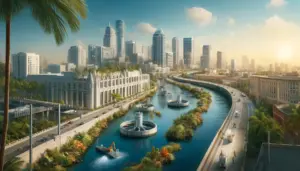The Differences Between Calendered and Extruded Vinyl Films
There are two main ways to produce vinyl films: calendering and extrusion. Each of these industrial processes can be used to produce a range of film and sheet products with distinct qualities. As with any manufacturing process, there are advantages and disadvantages to each approach.
What is Calendering?
In calendering, raw materials enter a mixing chamber where they are melted. This molten plastic then moves through a series of heated rollers that compress the material to the desired thickness. Finally, it passes through a series of surface conditioning and cooling rolls, then is wound into custom rolls or cut into sheets.
Calendering Pros and Cons
On the plus side, calendering allows high run rates on films 6 to 60 mils thick. Calendered material typically has higher tensile properties, product uniformity, and unusually close gauge control when compared with extruded films. The added mixing in the process is ideal for highly filled applications and materials, and has the additional advantage that melt degassing occurs in the process. Finally, materials with lower melt temperatures can be used in calendering due to the high pressures used between rollers.
On the downside, calendered products may have issues with pinholes at gauges less than 6 mils, and there may be appearance issues. The rollers used may create surface blemishes and edge buildup on the melt path can create black specs. Also, the sheets are usually less glossy than extruded materials. Calendering is a process that is typically not economically profitable for short production runs.
What is Extrusion?
In extrusion, mixed plastic compound is conveyed through a heated barrel using a spiral shaped screw, converting it into molten plastic. A lip die flattens the mass into a sheet of the desired width and thickness, which then passes through heated embossing rolls that impart a surface finish. The sheet is then trimmed to its final dimension.
Extrusion Pros and Cons
Extrusion offers a number of advantages. Even at thinner gauges, extruded film is pinhole free and has improved “lay flat” qualities. The extrusion process is more flexible, allowing faster changeovers for smaller production runs. The process also delivers better dimensional stability in both machine and cross web directions, and screws can be designed for specific formulations to help improve film characteristics. Finally, the streamlined melt flow reduces black specks.
A disadvantage of extrusion is the requirement for higher melt temperatures. There can also be poor mixing on highly filled formulations. Finally, melt degassing can be a production issue.
Presco Uses Extrusion to Produce Its Presco Engineered Film
Presco compounds and extrudes the flexible vinyl film known as Presco Engineered Film, which is custom formulated to the exact specification of our customers. And in 2017, Presco added Ethylene Vinyl Acetate (EVA) film extrusion to its capabilities as an option for PVC-free manufacturing. To learn about our capabilities, click here.









